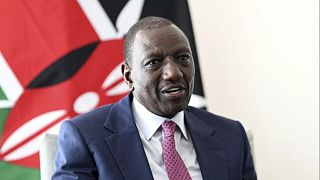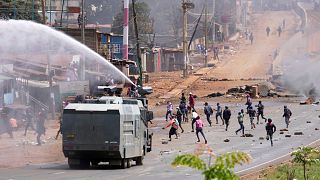Kenya
El Nino devastated much of the planet and East Africa has not escaped its passage.
At a gathering in Nairobi, Kenya, experts of the IGAD (Autoroité Intergovernemental for Development) pronounced the effects of El Nino on East African zones
According to a meteorology specialists and Director, IGAD meteo branch, Guleid Artan, the impact of El Nino on the region is less grave than expected.
“In the equatorial region, there was an increase in temperature, sporadic food but not so grave as planned. But in the northern area, it was more severe. Our forecasts suggest that El Nino is going to become neutral (in the Northern Region). The reheating is going to be lower than a degree, from the beginning of March.”
Ambassador and member of the meteo branch of the IGAD,Mahboub Maalim, said the balance assessment of the passage of the climatic phenomenon in East Africa is rather sad.
“Kenya, Uganda, Tanzania, Sudan and Somalia are part of the zones where heavy rainfall were observed and of course, Ethiopia, and the northern parts of the region experienced no rain. Excessive rain was experienced in certain regions, while other regions had little rain thereby causing severe drought.”
DTN Libya Unrest: Uganda Braces for Strongest El Nino in 20 Years: East Africa is bracing for the impact of El… https://t.co/8kRQRIAdOL
— DTN Libya (@DTNLibya) November 10, 2015
East Africa is bracing for the impact of El Nino. In Uganda, the government is preparing for massive flooding … https://t.co/Md8sTd8D9x
— ShinraTensei (@24tebs) November 10, 2015
Director of Regional Office at the UN, Pete Manfield, emphasizes the economic impact of the climatic disaster for Eastern Africa in these terms:
“It has obvious impact on what the governments require regarding humanitarian aid. The biggest increase was for Ethiopia. The government has requested for an assistance of 1.4 billion dollars. The government is the first to respond to these needs. It has committed more than 300 million dollars of its own resources to it.”













00:28
Nairobi hawker shot at close range by police declared brain dead
01:50
Faith Kipyegon falls short of historic sub-four minute mile but vows to keep pushing
Go to video
Kenya's Interior minister accuses protesters of coup attempt after deadly demos
00:48
Death toll in Kenyan anti-government protests rises to 16, says rights group
01:07
Kenya prepares for first anniversary of Finance Bill protests
01:52
UN's crucial humanitarian aid work faces a clouded future amid cuts in funds